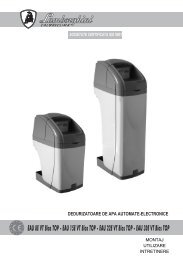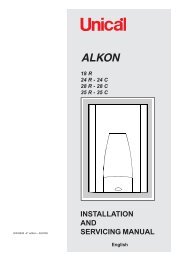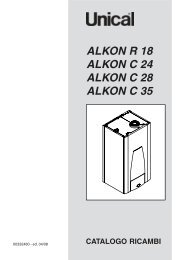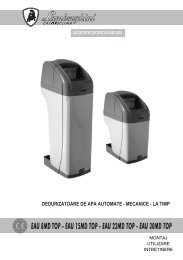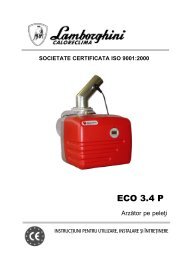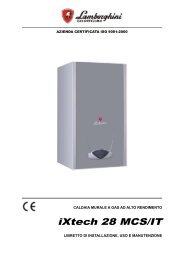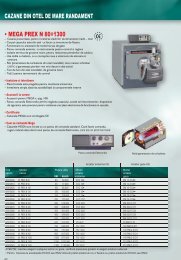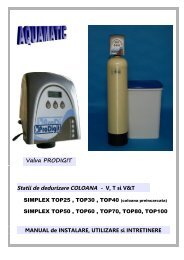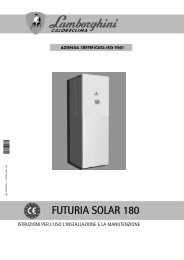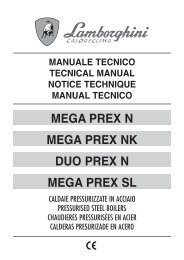product
TAHITI DUAL - Termoplus
TAHITI DUAL - Termoplus
- No tags were found...
You also want an ePaper? Increase the reach of your titles
YUMPU automatically turns print PDFs into web optimized ePapers that Google loves.
In boilers with an external heater for the supply of domestic hot water, which have a thermostat-type temperature sensor, the anti-freeze<br />
function does NOT protect the water heater. It can be protected by setting the boiler to Summer or Winter , or by setting a value above<br />
0°C on the water heater thermostat.<br />
In CH boilers with an external water heater for the supply of domestic hot water, which have an NTC temperature sensor (10 kΩ @ β=3435;<br />
refer to the boiler specifications), the anti-freeze function protects the water heater as well.<br />
When the external cylinder temperature sensor detects a water temperature of 5°C, the boiler switches on and stays on at its minimum thermal<br />
power until the temperature of the water in the external cylinder reaches 10°C or 15 minutes have elapsed. The pump continues to operate<br />
even if the boiler shuts down.<br />
The CH system can be protected effectively against freezing by means of specific anti-freeze additives suitable for use in multi-metal<br />
systems.<br />
Do not use car engine anti-freeze <strong>product</strong>s, and periodically check the effectiveness of the anti-freeze <strong>product</strong>.<br />
PUMP ANTI-BLOCKING FUNCTION AND DEVIATING VALVE<br />
If the boiler remains inactive for long time and<br />
• knob 9 is not on OFF,<br />
• the boiler is not electrically disconnected from the mains,<br />
the circulation pump (for all models) and the deviating valve (for models CTN and CTFS only) are automatically activated for a while every 24<br />
hours to prevent them from blocking.<br />
1.2.3. External temperature probe operation (optional)<br />
The boiler can be equipped with an (optional) external temperature probe, by means of which the boiler adjusts the CH water temperature<br />
according to the outdoor temperature, in other words, increasing the CH water temperature when the outdoor temperature decreases, and<br />
vice-versa. This increases energy-saving operation (this boiler mode is called “sliding temperature operation”).<br />
The boiler microprocessor program determines CH water temperature variations.<br />
When an external temperature probe is connected to the boiler, the CH water temperature adjusting knob (11, pic. 1) loses its function and<br />
becomes a room temperature control device.<br />
When knob 11 is turned fully counter-clockwise, the room temperature setting is 15°C; when set to 9 o’clock, the temperature is 18°C; when<br />
set to 12 o’clock, the temperature is 25°C; when set to 3 o’clock the temperature is 32°C; when it is turned fully clockwise the temperature is<br />
35°C.<br />
For the best curve setting, it is advisable to set the temperature at around 20°C.<br />
Picture 2 shows the curves for af room temperature of 20°C. As this value is increased via the regulation knob 11, the curves move upwards.<br />
With this setting, if for example you select the curve corresponding to coefficient 1, with an outdoor temperature of -4°C, the flow temperature<br />
will be 50°C.<br />
Refer to subsection 3.2.15 for detailed sliding temperature operation.<br />
CH flow temperature (°C)<br />
Thermoregulation curves<br />
coefficient<br />
pic. 2 - Temperature regulation curves<br />
External temperature (°C)<br />
10



